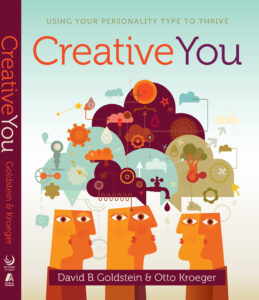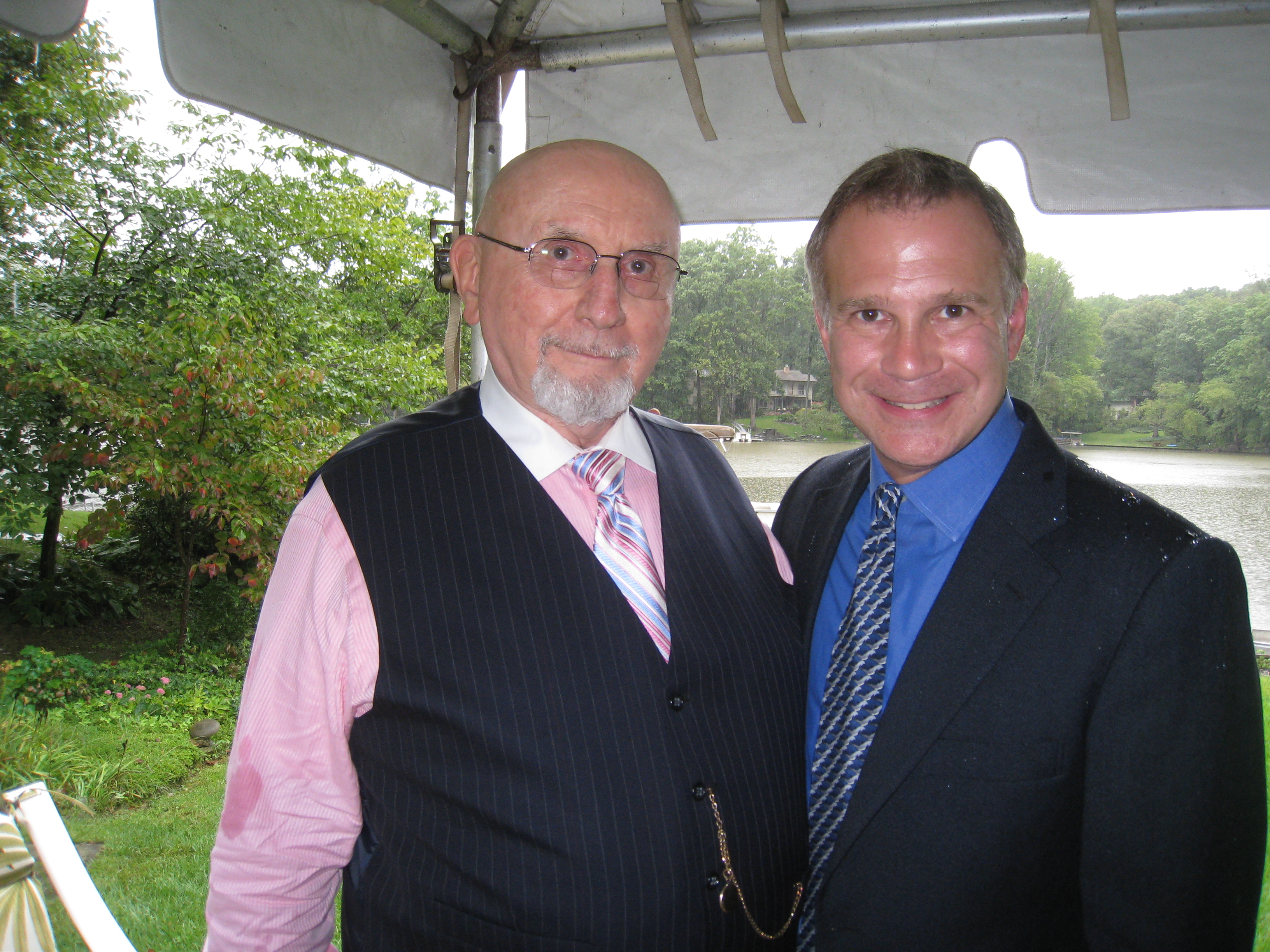Everyone is Creative
Do you think of yourself as creative? Or do you think you missed that gene? You admire others who paint or sculpt or write or create, but it’s not for you. Or maybe you remember a teacher encouraging you as a child, but that was long ago and you no longer think you’re very innovative.
David B. Goldstein and Otto Kroeger argue that everyone is creative. In their new book Creative You: Using Your Personality Type to Thrive, they give readers the opportunity to understand their creative potential. When you take the quiz, you discover which of over sixteen personality types you are and how you can harness your unique creative power.
I recently had the opportunity to talk with David about his work and what he has learned about creativity and personality.
Invent a Better Way
David, most people only use a fraction of their potential creative ability available. What do you say to those who say they don’t care whether they are considered creative or not? Why is it so important to understand your style and become more creative?
Great question, Skip! Everything is changing quickly and each day we all have to solve unprecedented problems at home and at work. To survive and to compete we need to be creative. Creativity isn’t just about making art or music; it’s about inventing better ways to do our jobs, and if we leave creativity up to others, we will be left behind.
Busting Creativity Myths
You bust myth after myth about creativity. I think you list twenty myths. Let’s talk about a few of them. Would you share just three of these myths and why they are wrong?
Yes, there is much mystery around the creative process and the myths that many of us accept harm us by holding us back. Here are three:
1. “There is only one type of creativity.”
A critical mistake many of us make is in assuming that we’re all the same. Did Henry Ford have the same kind of creative style as Picasso? Ford was conservative and created within a rigid model; Picasso was much more fluid. We all have unique knowledge, can learn techniques, and are capable of creating in our own way. Give a classroom of children a topic and ask them to write an essay, and then see how many variations you get. Each of us sees the world in our own way, and we act accordingly. Our creativity is as unique as our fingerprints and leaves an impression on whatever we make.
2. “Creative people are spontaneous, untimely, and unstructured.”
This falsehood rests fully on personality type differences, and we explore it further in our book, but for now, creative people can be planners, deadline oriented, and orderly. One of our nation’s greatest achievements was the space program at NASA, and its work has solved unprecedented problems on a massive scale through carefully planned, scheduled, and organized program management.
3. “You have to leave your comfort zone to be creative.”
Actually, you need to be yourself to find your comfort zone. When you are being yourself, you’re in a position of strength and can take calculated risks. Find the rock that balances your weight so you can stand on it and dance.
 What is one surprising thing you learned about creativity through all of the research for this book?
What is one surprising thing you learned about creativity through all of the research for this book?
I was shocked to find when interviewing people that so many didn’t think of themselves as creative even though they are. Some hold patents, others are successful designers, chefs, engineers, even actors, and they would point to someone else who they thought was “truly” creative, and say: “Why are you talking with me?” Through our conversations, they began to see themselves as creative. I’ve never met a person who was not creative in some ways.
Does your research indicate that knowing your creative style will help you succeed at work? If so, how?
Yes, while Otto, my coauthor, has spent decades teaching people within companies and government organizations to use their personality type to succeed at work through better communications and collaboration, one area has changed. Today, we need to use our creativity at work more than ever.
Every type can succeed in any profession and in fact if you find you are different from your coworkers, your value can come from knowing and using your uniqueness. I for example, had the opportunity to work with a mother/daughter team of entrepreneurs. When I first met them, their differences were jeopardizing both their professional and personal relationships. Not surprisingly, I found that aside from both being extroverts and talking over each other, they had nearly opposite personality types. After sharing what we learned about creative types with them, they saw the strengths each was bringing to the table. While of course there was some overlap, it became clear that one preferred to be creative by developing new ideas, and the other found innovative ways to turn the ideas into profitable products that people could use— but best of all the two became closer and now laugh together instead of argue.
Develop a Creative Culture
How can leaders influence their organizations to be more creative?
The most important thing for leaders to know to develop a creative culture is that everyone isn’t creative in the same way, and they may not be creative in the same way you are. For example, group brainstorming isn’t for everyone; some people come up with their best ideas later while reflecting during the drive home. Leaving a channel open for them to contribute their ideas afterwards could benefit everyone. Furthermore, some creative types prefer to be conceptual, solving anticipated problems and designing products to enter future markets – other types prefer solving actual immediate problems that exploit today’s opportunities. Obviously these “creative differences” are both important, and a leader who is receptive to this can maximize the creative culture.
You’re certified with the Myers-Briggs Indicator and this research connects the psychological types with creativity. No surprise, you’re also an internationally acclaimed artist. Your co-author, Otto Kroeger, is a worldwide expert on the MBTI. This is the first book I’ve ever seen linking creativity with the MBTI. Take us into your world and explain a time when you saw someone’s eyes light up because of the connections you made. How did this change that person’s thinking?
In many books, the authors try to teach how they are creative, in our book, we don’t do this. Instead we help readers identify their own path.
While working on this project we keep our ideas mostly under wraps. When I would share our connections between personality and creativity, often “quick” meetings over coffee or a beer turned into deep conversations and revelations long into the night. The people who immediately get it and whose eyes light up are usually people who already know something about personality type. It’s like a person with a smart phone getting a new app that they can use right away. For other people, I have to first explain the basics as we do in the first section of our book. It takes a little longer, but it’s exciting to see their transformation.
After sharing these concepts with the CEO of a medical device startup in Asia, he was able to see his key role as the visionary who was driving innovation, and it allowed him to delegate more of the hands-on operations to other team members. An advisor for a national political campaign saw value in messaging to different types of voters. An art teacher gained more confidence in her own style and has new understanding for reaching her students to develop their own creative styles. Often the ideas in our book seem to take on a life of their own, and it’s extremely gratifying for me to see the book take on unforeseen uses, and I’m thrilled to start these conversations.
Creative You: Using Your Personality Type to Thrive


